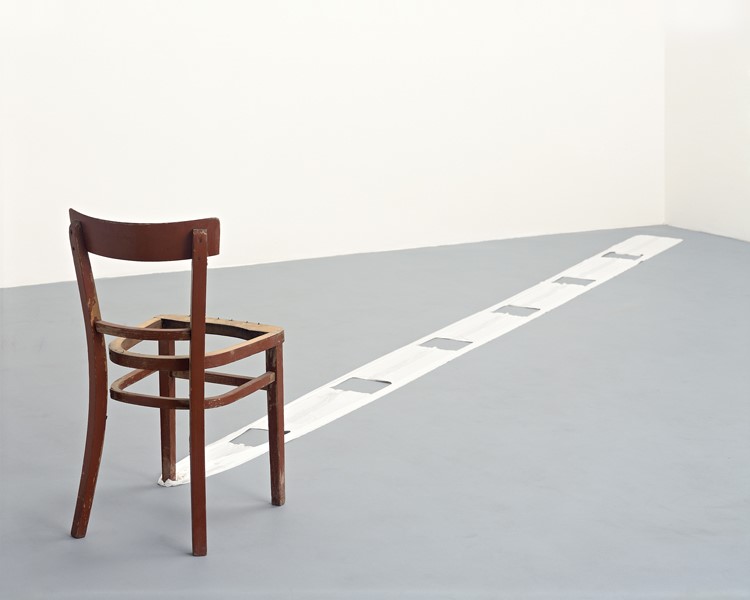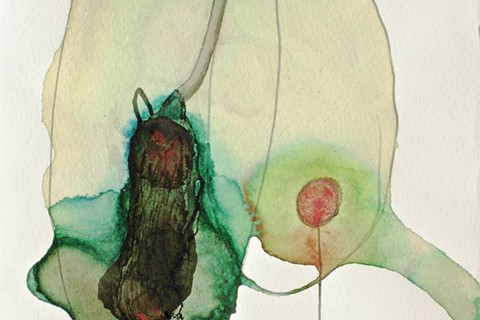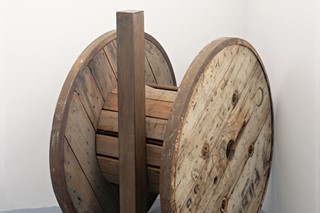Born in 1950 in the town of Goiânia in central Brazil, Lucia Nogueira came to London in 1975, where, a decade later, she began practicing as a sculptor. Before she passed away in 1998, her idiosyncratic approach to the form and her ability to infuse
Born in 1950 in the town of Goiânia in central Brazil, Lucia Nogueira came to London in 1975, where, a decade later, she began practicing as a sculptor. Before she passed away in 1998, her idiosyncratic approach to the form and her ability to infuse discarded and found objects with powerfully expressive tension made her the toast of the art world — from gas pipes seemingly threatening to explode, to huge wheels that looked as though they might be about to roll across gallery spaces, she always managed to engage the viewer’s imagination in an unsettling conceptual game. This month, the artist is the subject of a major retrospective at Kettle’s Yard in Cambridge entitled Mischief. Here the curator of the show Elizabeth Fisher tells us why it’s something that’s long overdue.
In what sense are Nogueira's sculptures obscure objects of desire? Why do you think she was compelled to challenge the viewer to scrutinise her work for meaning?
Before her death in 1998, Nogueira had become one of the most individual voices in sculpture in this country. She tapped into the emotional and psychological life of objects and her legacy was to demonstrate the ongoing expressive potential of sculpture. Liam Gillick once described her as "taking things that are close to hand and imbuing them with malignancy and magic", and many of the works explore sensations of tension — weight and vulnerability, arrested motion, visibility and obscurity — through combinations of materials such as fur and metal or the juxtaposition of objects like an empty industrial-size cable wheel held still by a steel post. Her work reveals affinities with a range of artists and movements, such as Arte Povera and minimalism, and female predecessors such as Eva Hesse, Lygia Clark and Louise Bourgeois. This is the first significant survey of her work since her death in 1998. It includes little known pieces as well as some more familiar works, and reveals some recurring themes and motifs. There are also a number of works on paper, which are somewhat freer and more whimsical than her sculptures.
Can you talk to us a little about how Nogueira plays with the viewer's perception and how (if at all) they are metaphors for human relationships and sexual desire?
There are some early drawings where sexuality is explicitly referred to — a scene of a couple having sex on a mattress, or figures with their heads obscured by red or black clouds often connected with a thin black arrow pointing to the genitals. The connection was between the mind and sexuality. But I am less sure of sexuality being explicit in the sculptures, although they are vividly sensuous. I think there is violence or power implicit in some of the combinations of materials, but this is so obtuse, as with all of Nogueira's gestures, it's hard to identify a specific meaning. I think the fact that her works manifest a finely tuned ambivalence is more important.
Would you say that sexuality and feminism were key concerns for Nogueira?
I think Nogueira did draw on her sexuality and gender in her practice, but these themes become so obtuse and coded that I wouldn't say it was a key concern. It is one of many readings of her work; her work has many different associations and resonances, it is intentionally difficult to pin down and enigmatic in nature.
Do you think there was sometimes an overtly political element to some of Nogueira's work? What do you think Nogueira's opinion would have been on the reduction of art to commodity?
Nogueira's work does not reduce art to the discourse of commodities — I think she would have regarded that as a rather one-dimensional understanding of art. In the process of using discarded objects such as a wobbly chair or rickety wooden cabinets as the basis of many of her works, paired with painstakingly polished drinks cans (unopened) and off-the shelf plastic bin liners, Nogueira may have offered us a moment to reflect on cultures of mass consumption and production, but she wasn't being overtly political. What she really seems to revel in is their aesthetic and emotional value.
Mischief: Sculptures and drawings by Lucia Nogueira exhibits at Kettle's Yard, Cambridge from 15 January until 13 March.



